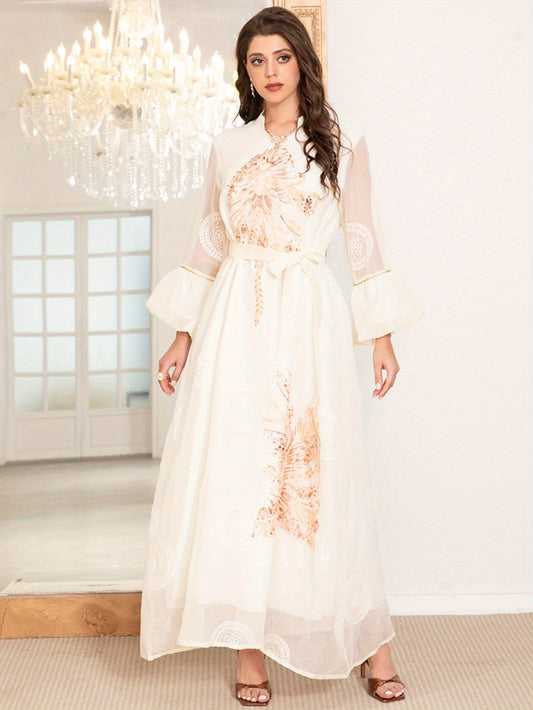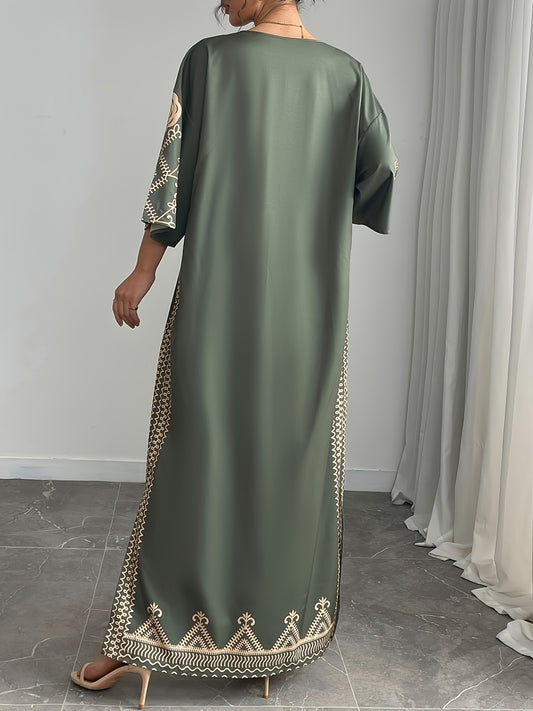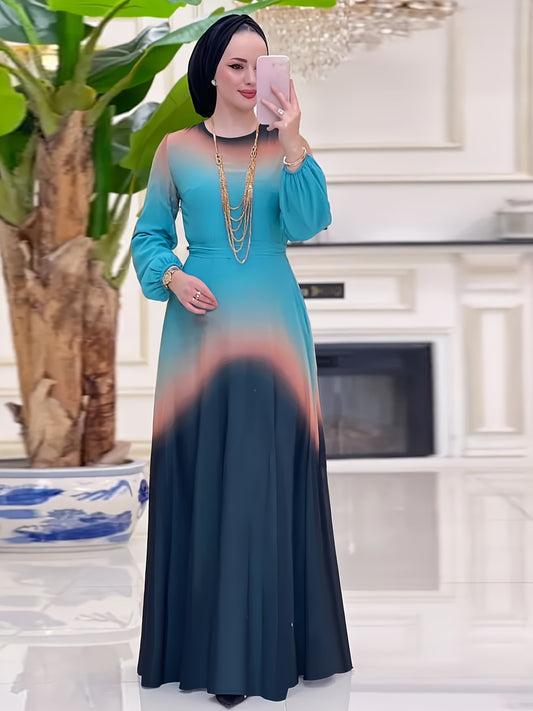About Baju Kaftan
Baju Kaftan – Timeless Modesty With Contemporary Elegance
The baju kaftan represents a harmonious blend of tradition, comfort, and elegance. Known for its free-flowing silhouette, loose fit, and versatile styling, the kaftan has been worn across cultures for centuries, from North Africa and the Middle East to Southeast Asia. In its modern adaptation, the baju kaftan has become a popular choice for women seeking modest yet stylish clothing that works for both daily wear and formal occasions. The Baju Kaftan Collection celebrates this legacy by offering garments that merge cultural authenticity with modern design, creating attire that feels effortless while exuding grace.
Origins Of The Kaftan
The kaftan’s roots can be traced back to ancient Mesopotamia and Persia, where it was worn by royalty as a symbol of status and wealth. Its spread across the Ottoman Empire and into North Africa and Southeast Asia made it a cultural staple. The Malay adaptation of the kaftan, often referred to as “baju kaftan,” incorporated traditional tailoring and fabrics suitable for humid climates. Over centuries, the kaftan has evolved into a garment that transcends borders, representing modesty, beauty, and practicality.
Structure And Design
A baju kaftan typically features a loose, ankle-length cut with wide sleeves. This flowy silhouette ensures modest coverage while allowing airflow and comfort. Modern designs have introduced variations such as side slits, cinched waists, layered fabrics, and embellished necklines. Some kaftans resemble abayas in coverage, while others lean toward gowns suitable for evening wear. The adaptability of its structure allows women to wear kaftans for home, travel, religious gatherings, or luxury occasions.
Fabrics That Define The Kaftan
Fabric plays a central role in shaping the appeal of a baju kaftan.
-
Cotton: Breathable and comfortable, ideal for casual wear.
-
Crepe And Jersey: Lightweight yet structured, perfect for professional and semi-formal looks.
-
Silk And Satin: Luxurious fabrics that elevate kaftans into evening attire.
-
Chiffon And Georgette: Flowing fabrics for layering and embellished designs.
-
Velvet: Rich and warm, often used for winter kaftans or special events.
Each fabric choice gives the kaftan a distinct character, balancing modesty with functionality.
Color Palettes In Baju Kaftans
Colors have symbolic significance in kaftans.
-
Classic Black: A timeless option that blends modesty with elegance.
-
White And Ivory: Represent purity, commonly chosen for religious gatherings.
-
Pastels: Blush, lavender, and mint tones reflect softness and femininity.
-
Jewel Tones: Deep emerald, sapphire, and burgundy add regal sophistication.
-
Earth Neutrals: Beige, taupe, and olive suit professional and travel contexts.
By offering diverse shades, kaftans give women the freedom to express personality while honoring cultural modesty.
Occasions To Wear A Baju Kaftan
The kaftan’s versatility allows it to adapt across multiple contexts.
-
Casual Settings: Cotton kaftans provide everyday comfort at home or during travel.
-
Festive Celebrations: Embellished silk kaftans are chosen for weddings, Eid, and family events.
-
Religious Gatherings: Modest designs in neutral or white tones align with spiritual settings.
-
Corporate Events: Tailored crepe kaftans in professional shades like navy or grey.
-
Luxury Occasions: Beaded or embroidered kaftans styled like gowns for galas and receptions.
This adaptability is why kaftans remain timeless despite shifting fashion trends.
Regional Influence
The kaftan has been interpreted differently across cultures. In Morocco, it often appears as an ornate gown with embroidery. In the Middle East, kaftans resemble abayas with flowing coverage. In Malaysia and Indonesia, the baju kaftan is lighter and more breathable, reflecting the tropical climate. In Western fashion, kaftans have been adapted as beachwear and luxury lounge attire. This global acceptance highlights the garment’s unique ability to cross cultural and stylistic boundaries.
Styling Options For Kaftans
Styling a baju kaftan allows women to merge modesty with individuality. Hijabs in matching or contrasting tones complete the look, while belts add shape to loose silhouettes. Jewelry and clutches elevate embellished kaftans for weddings, while minimalist sandals suit casual wear. Shoes, handbags, and accessories can transform the kaftan from simple daily wear into a luxurious ensemble.
Kaftans And Identity
The kaftan is more than fabric—it represents comfort, inclusivity, and identity. It allows women to feel elegant without compromising modesty. For many, wearing a kaftan is a connection to heritage and tradition, while for others, it’s a choice of convenience and style. The garment empowers women to express individuality within the framework of modest fashion.
Empowerment And Modern Fashion
Kaftans reflect empowerment in modest fashion. They show that covering does not limit creativity but instead expands it. Women can feel confident and sophisticated without adhering to revealing trends. Just as Fabulive Hair Extensions empower women to explore beauty through hairstyles, baju kaftans empower them to embrace cultural pride through clothing. Both reflect innovation and inclusivity while remaining deeply personal.
Sustainability In Kaftan Design
Sustainability is shaping kaftan design. Eco-conscious fabrics, timeless cuts, and investment in long-lasting garments are becoming more common. Women are increasingly choosing kaftans that remain stylish season after season, reducing the impact of fast fashion. Neutral colors and versatile fabrics ensure durability, aligning with global trends in sustainable living.
The Future Of Baju Kaftans
As modest fashion grows globally, kaftans are set to remain at the forefront. Expect designs that merge traditional embroidery with modern tailoring, digital prints, and adaptive sizing for inclusivity. Kaftans will continue to evolve in fabric and design, but their essence—comfort, modesty, and elegance—will remain unchanged.
Customer Reviews
-
“The pastel kaftan I bought was so comfortable and elegant. Perfect for spring gatherings.” – Layla, USA ⭐⭐⭐⭐⭐
-
“The jewel-toned baju kaftan I ordered was rich in color and perfect for evening wear.” – Yasmeen, UK ⭐⭐⭐⭐
-
“I loved the chiffon kaftan I received. Lightweight and graceful.” – Samira, Canada ⭐⭐⭐⭐⭐
-
“The black silk kaftan I wore at Eid looked stunning. Excellent fabric quality.” – Mariam, Australia ⭐⭐⭐⭐⭐
-
“The beige crepe kaftan was perfect for work meetings. Simple yet professional.” – Noor, Germany ⭐⭐⭐⭐
-
“The embroidery on my maroon kaftan was exquisite. Everyone complimented it.” – Hana, France ⭐⭐⭐⭐⭐
-
“Very versatile and modest. I wore it to a family wedding and felt elegant all night.” – Fatima, UAE ⭐⭐⭐⭐⭐
-
“The olive shade kaftan I ordered is timeless and chic. Great for everyday wear.” – Sofia, Italy ⭐⭐⭐⭐
-
“The satin kaftan with crystal embellishments was luxurious and comfortable.” – Amina, Saudi Arabia ⭐⭐⭐⭐⭐
-
“The craftsmanship is excellent. After several washes, it still looks brand new.” – Chloe, Switzerland ⭐⭐⭐⭐⭐






